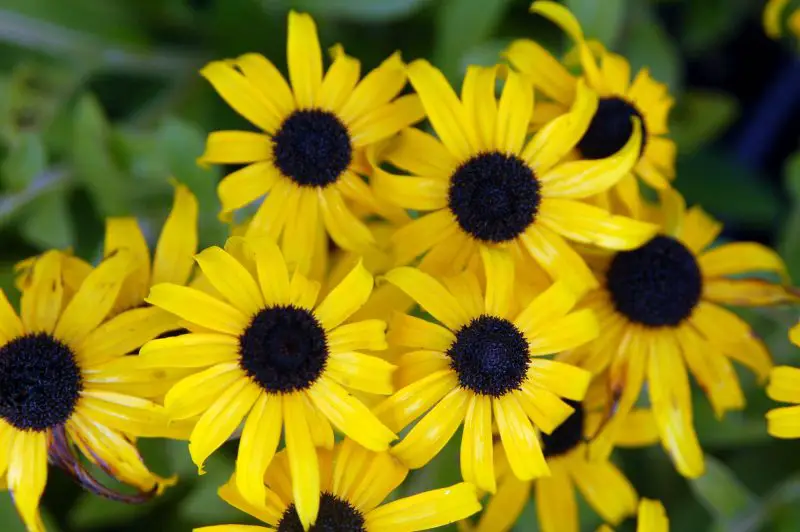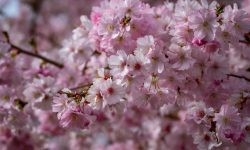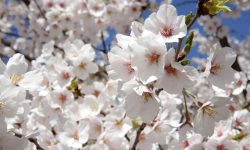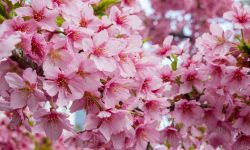Black Eyed Susans, scientifically known as Rudbeckia hirta, are iconic wildflowers that brighten gardens with their golden-yellow petals and dark, chocolate-brown centers. Loved by gardeners for their resilience and cheerful blooms, they are a staple in summer and fall landscapes. Despite their hardy nature, providing proper care ensures that these flowers thrive for months, producing healthy foliage and abundant blooms. Understanding their growing needs, watering habits, and maintenance techniques is essential to keep them looking their best throughout the growing season.
Caring for Black Eyed Susans the right way involves more than simply planting them in the soil and waiting for blossoms. These perennials or biennials require the right soil conditions, proper sunlight exposure, and timely pruning to encourage longer blooming periods. Whether you are planting them in borders, meadows, or container gardens, learning the best practices will keep them vibrant year after year.
Understanding the Growing Requirements of Black Eyed Susans

The first step to caring for Black Eyed Susans is understanding their natural growing environment. Native to North America, they thrive in open fields, meadows, and prairies, making them well-suited to sunny garden spots. These flowers are sun-loving plants that require a minimum of six to eight hours of direct sunlight each day to maintain healthy growth. Insufficient sunlight can lead to leggy stems, fewer flowers, and a generally weakened plant.
Soil preparation plays a critical role in their care. Black Eyed Susans prefer moderately fertile, well-draining soil, although they are tolerant of poor soil conditions. Adding organic matter such as compost can enrich the soil, improving both drainage and nutrient availability. The ideal soil pH ranges from slightly acidic to neutral, around 6.0 to 7.0, which supports optimal nutrient uptake.
Temperature tolerance is another key factor in their care. These hardy plants are adaptable to USDA zones 3 through 9, making them suitable for a wide range of climates. However, extreme heat combined with poor watering can stress the plants, leading to wilting or reduced flowering. Maintaining proper moisture levels during hot, dry periods ensures they remain lush and healthy.
Watering Black Eyed Susans for Healthy Growth
Watering is essential for keeping Black Eyed Susans strong and vibrant. While they are relatively drought-tolerant once established, young plants require consistent moisture to develop strong root systems. Deep watering once or twice a week is preferable to frequent shallow watering, as it encourages roots to grow deeper into the soil.
Overwatering, however, can be detrimental, causing root rot and fungal diseases. Ensuring that the soil drains well helps prevent water from pooling around the roots. Mulching around the base of the plants is an effective way to retain moisture while also preventing weeds from competing for nutrients and water.
During periods of extended drought, supplemental watering becomes crucial to protect the plants from stress. Early morning watering is recommended, allowing foliage to dry before evening, which reduces the risk of fungal infections. Observing the plant’s leaves can also help determine water needs; drooping leaves often indicate that the plant requires hydration.
Fertilizing Black Eyed Susans for More Blooms
Black Eyed Susans are not heavy feeders, but providing balanced nutrients can significantly enhance flowering and overall plant health. Incorporating compost or well-rotted manure into the soil before planting is often sufficient for healthy growth. For established plants, applying a slow-release, balanced fertilizer in early spring encourages vigorous growth and abundant blooms.
Excessive fertilization, especially with high-nitrogen formulas, can lead to lush foliage at the expense of flowers. Choosing a fertilizer with a balanced ratio, such as 10-10-10, provides the necessary nutrients without overstimulating leaf production. Organic fertilizers are also beneficial, gradually enriching the soil with essential minerals over time.
Mid-season fertilization can help prolong the flowering period, especially if the soil is nutrient-poor. Applying a light layer of compost around the base of the plants provides a natural nutrient boost, ensuring that the flowers continue to bloom profusely until late summer or early fall.
Pruning and Deadheading to Encourage Continuous Blooming
Pruning and deadheading are essential techniques for keeping Black Eyed Susans looking neat and encouraging prolonged flowering. Deadheading, which involves removing spent blooms, redirects the plant’s energy from seed production to the development of new flowers. This simple maintenance task can significantly extend the blooming period, resulting in a longer display of vibrant yellow blossoms.
When deadheading, it is important to cut the stem back to a healthy leaf node to promote strong regrowth. If the plant is allowed to go to seed too early in the season, flower production will decline. However, towards the end of the growing season, some gardeners allow the flowers to go to seed to provide winter interest and food for birds.
Pruning also helps manage the plant’s shape and prevents overcrowding. Cutting back leggy or damaged stems encourages new, vigorous growth, maintaining a fuller and healthier plant. In late fall, after the flowering season ends, cutting the plant down to a few inches above the ground helps prepare it for winter dormancy.
Controlling Pests and Diseases in Black Eyed Susans
Although Black Eyed Susans are generally resilient, they can occasionally fall victim to pests and diseases. Common pests include aphids, spider mites, and leaf miners, which can damage foliage and weaken the plant if left untreated. Inspecting the plants regularly allows for early detection and control of infestations.
Using insecticidal soap or neem oil can effectively manage most pest problems without harming beneficial insects. Strong sprays of water can also dislodge pests from the leaves, especially in the early stages of infestation. Encouraging beneficial insects like ladybugs helps keep pest populations under control naturally.
Fungal diseases, such as powdery mildew and leaf spot, may occur in humid or overcrowded conditions. Proper spacing, adequate air circulation, and watering at the base of the plant rather than overhead help reduce the risk of fungal infections. If fungal issues persist, removing affected foliage and applying an appropriate fungicide may be necessary to protect the plant.
Preparing Black Eyed Susans for Winter
Proper winter care ensures that Black Eyed Susans return healthy and vibrant in the following growing season. In colder regions, these hardy perennials die back to the ground after the first frost, entering dormancy during winter. Cutting back the stems to just a few inches above the ground after the foliage has died back is recommended.
Mulching is beneficial during winter, especially in regions with harsh freezes. A thick layer of organic mulch, such as straw or shredded leaves, insulates the roots and protects them from temperature fluctuations. In milder climates, the plants may remain semi-evergreen, requiring minimal winter protection.
Allowing some seed heads to remain over winter can provide food for birds and add visual interest to the garden. Once spring arrives, removing old mulch and cleaning up dead plant material will help prevent fungal issues and encourage healthy new growth.
Propagating Black Eyed Susans for More Plants
Propagating Black Eyed Susans is an easy way to expand your garden. These flowers can be propagated through seeds, division, or cuttings, with seed propagation being the most common method. Allowing some flowers to go to seed naturally will encourage self-seeding, which is ideal for creating a naturalized meadow look.
For more controlled propagation, collecting seeds after the flowers fade and sowing them indoors or directly in the garden is effective. Dividing established plants every three to four years not only increases plant numbers but also rejuvenates older clumps, preventing overcrowding and promoting healthier blooms.
When dividing, carefully dig up the root clump and separate it into smaller sections, ensuring that each section has healthy roots and shoots. Replanting these divisions in well-prepared soil gives them the best start for vigorous growth in the following season.
Enjoying Black Eyed Susans in Garden Design
Beyond their easy maintenance, Black Eyed Susans are valued for their aesthetic appeal in garden design. Their bright golden-yellow flowers contrast beautifully with purple coneflowers, lavender, and ornamental grasses, creating vibrant, pollinator-friendly garden spaces. These flowers attract butterflies, bees, and other beneficial insects, making them an excellent choice for wildlife gardens.
Planted in borders, they provide cheerful color throughout summer and fall. They are also ideal for cottage gardens, wildflower meadows, and prairie-style plantings. When grown in containers, they bring a burst of color to patios and balconies, provided they receive adequate sunlight and regular watering.
Their long-lasting blooms also make them excellent cut flowers for indoor arrangements, adding warmth and brightness to any room. With the right care, they remain a reliable and stunning addition to gardens for many years.
FAQs About Caring for Black Eyed Susans
How often should Black Eyed Susans be watered?
Water deeply once or twice a week, allowing the soil to dry slightly between waterings. Mature plants are drought-tolerant, but young plants need consistent moisture.
Do Black Eyed Susans need fertilizer?
Yes, but only moderate amounts. Compost or a balanced fertilizer applied in early spring is usually enough to keep them healthy and blooming.
Should Black Eyed Susans be cut back in winter?
Yes, cutting them back to a few inches above the ground after frost helps prepare them for winter dormancy and encourages healthy spring growth.
Can Black Eyed Susans grow in shade?
They prefer full sun but can tolerate light shade. However, too much shade may result in fewer blooms and weaker stems.
How long do Black Eyed Susans bloom?
With proper deadheading, they can bloom from early summer until the first frost, providing months of continuous color.
Final Thoughts on Caring for Black Eyed Susans
Learning how to care for Black Eyed Susans the right way ensures that these cheerful flowers remain a highlight in your garden season after season. By providing adequate sunlight, proper watering, and occasional fertilization, you can enjoy healthy plants with abundant blooms. Regular deadheading and pruning keep the plants looking neat while encouraging more flowers, and proper pest and disease management ensures their long-term health.
Whether you are planting them in a cottage garden, prairie-style landscape, or container, Black Eyed Susans reward even minimal care with stunning color and wildlife-friendly blooms. With the right attention, they will continue to brighten your garden for many years to come.






